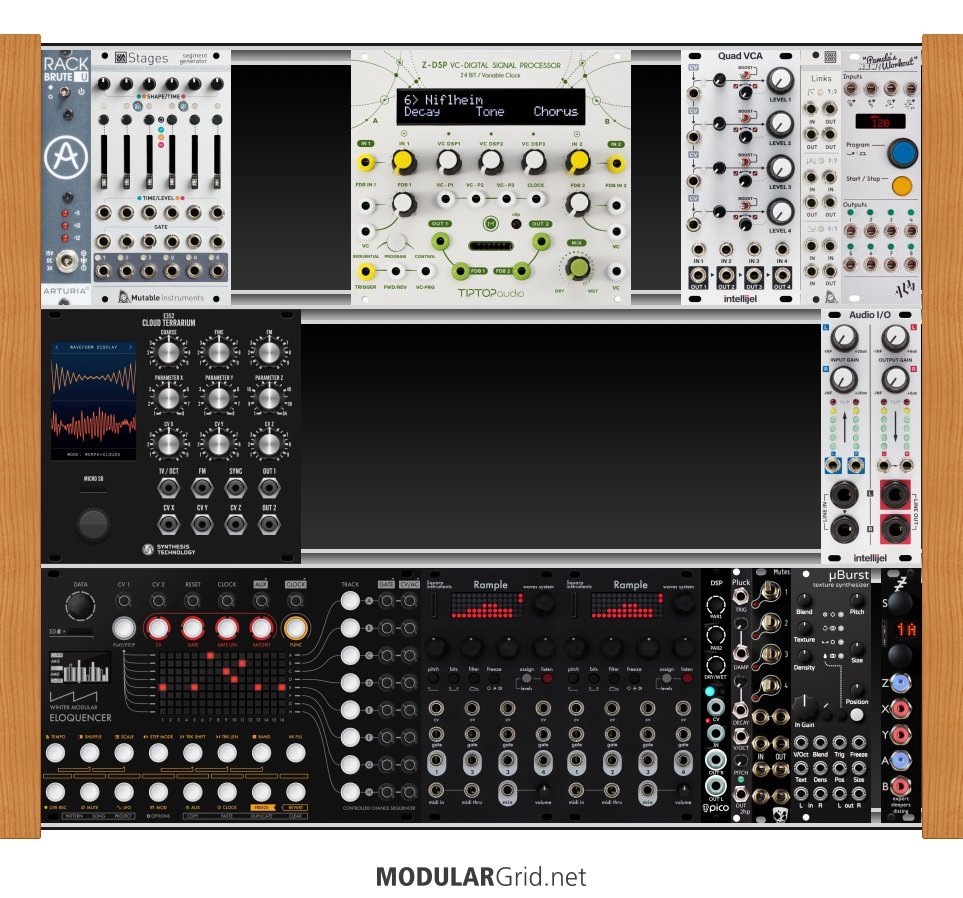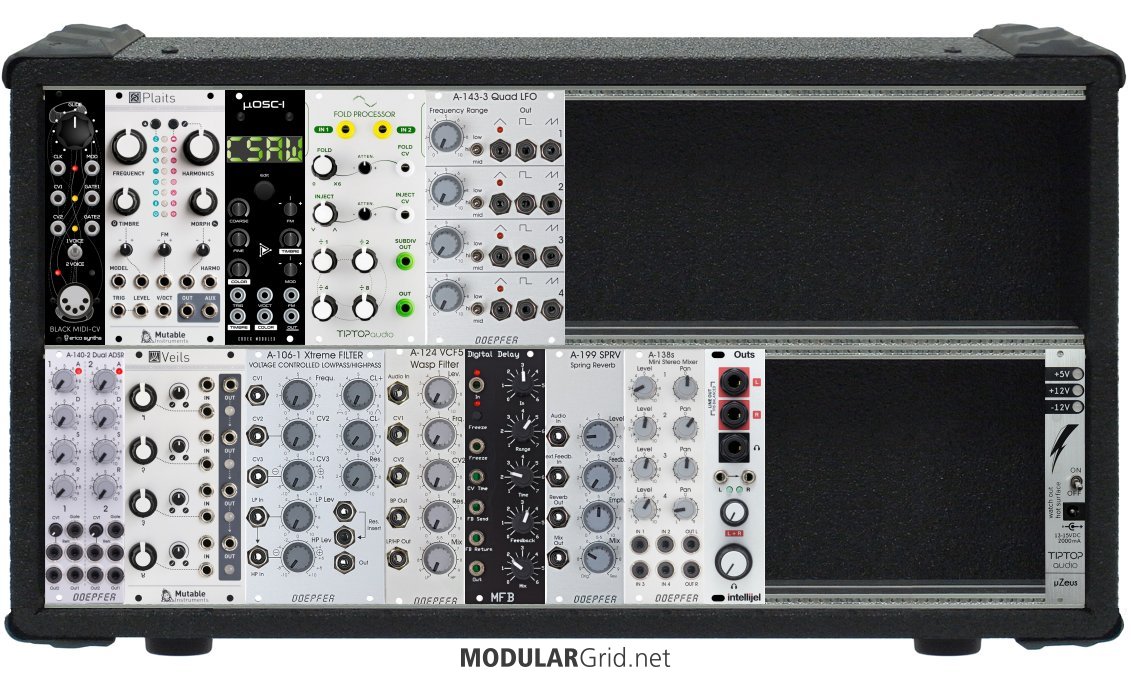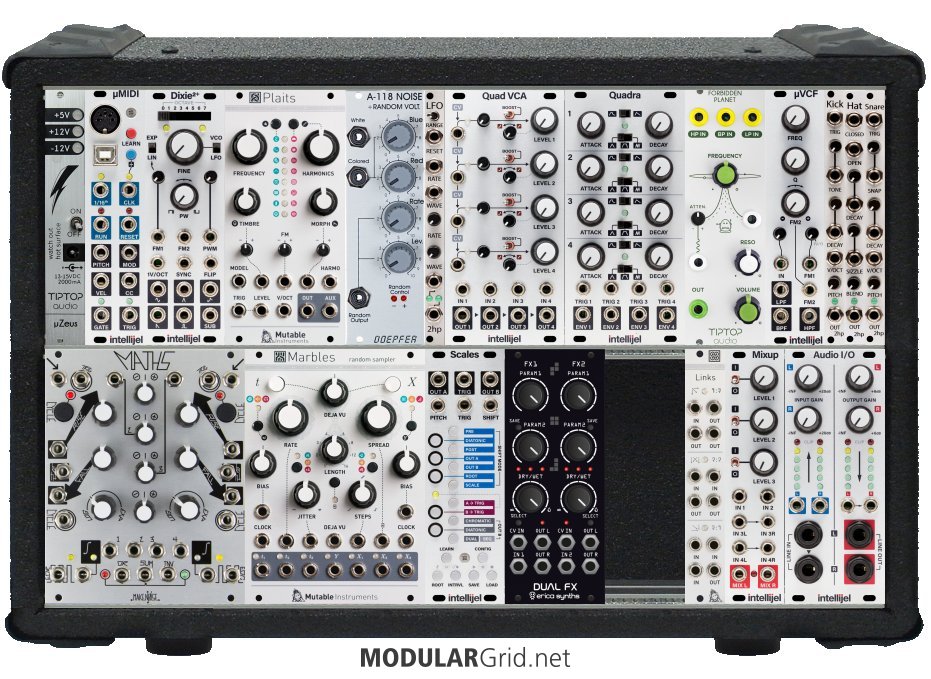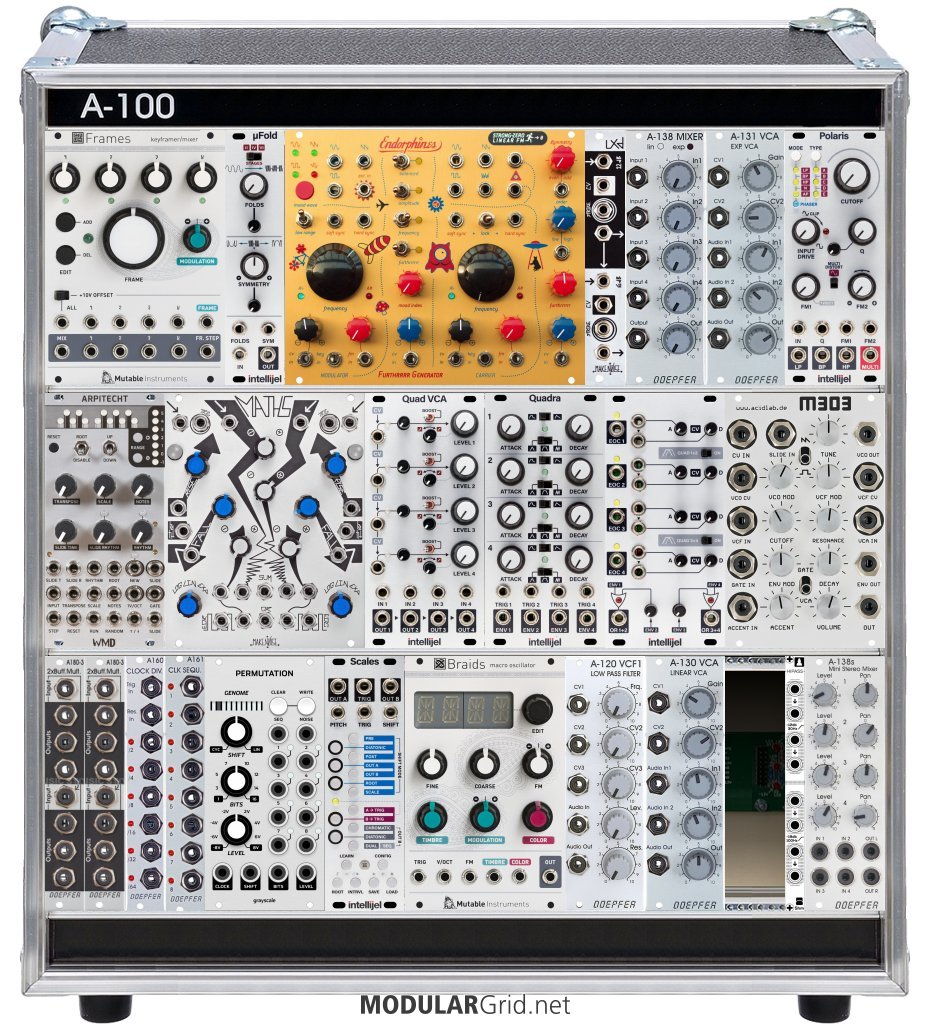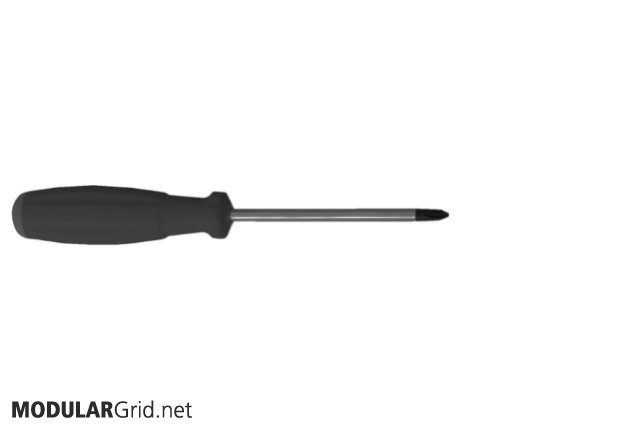[WARNING: DEVIL'S ADVOCACY FOLLOWS]
I'm going to venture a guess that about half of you reading this right now DO NOT need a modular synthesizer.
No, really. While you see these instruments quite a bit these days, especially on YouTube and other Interwebz outlets, and while they look really intriguing, there are some points about them that you might want to consider.
First of all, what ARE modular synthesizers? Some people think that any synth with patchpoints is a modular, and this is simply wrong. Devices such as the Korg MS-20, ARP 2600, etc are often called “modular”, but these are better described as “patchable” since they have a prepatched voice path, and the patchpoints are actually override points for this. A true modular synthesizer DOES NOT have a prepatched voice; instead, ALL connections must be made by hand between individual circuit modules (hence the name), and the instruments are made up of collections of these.
But also, one has to keep in mind what a synthesizer IS. And that would be an instrument in which sound is generated and manipulated through electronic means AND which consists of four basic parts:
generators, modifiers, modulators, and controllers. So, in the case of a modular synthesizer, it must have those four primary components in the proper ratios so that you actually arrive at a usable instrument. But IS there some hard and fast rule there?
Well...no. And this is where the trouble starts.
Clearly, there are devices that must be in any synthesizer. But when that's predetermined by another engineer or designer, it lets you off the hook. You don't have to worry about putting the right stuff in the case, as that's already done for you.
...but not in a modular synthesizer, however, unless you get a prebuilt system. Aside of those, you're on your own. So if that's the case, then how well do you know how synthesis works? Well? Really well? Not really at all?
Modular synthesizers ARE NOT a good starting-point to learn synthesis. In fact, they're quite terrible! There is so much to them that can be gotten wrong that they actually have better odds of misinforming new users than giving them the keys to the sonic kingdom. Patchables are better for this, because when your tinkering outright fails, you can always fall back on the prepatched path. In fact, I often state that the best teaching synth of all time has to be the ARP 2600. If you can't sort out how the process works on one of THOSE...well, pianos don't have knobs, and you might feel more comfortable with one. Maybe if Korg pulls its collective head out of its collective ass and decides to ACTUALLY reissue these (instead of dicking everyone over with 500 units only, worldwide), you'll get a chance to see what I mean.
But I digress...anyway, the reason why these are easier and why they're what I would recommend is because of that default path. You're never left with a “useless” box of widgets. OTOH, a modular will do EXACTLY THAT to you if you don't know what you're doing. Or worse, you'll have a box that fights you at every turn!
“But why does [INSERT “INFLUENCER” HERE] have one,” you ask? Hm...they look good, for one thing. One would expect that, if there's that wall of knobs and wires and blinkylites, this guy on the screen must know what they're going on about...right? Right? TELL ME I'M RIGHT!!!
No, you're not right. A lot of these people just have them around as set decorations, really. Do you see them messing around with it for more than just the span of the video? Or sillier, do you see them with moooooooood lighting (yes, that many “o”s are needed) and such, like the whole effin' studio has Bond Villain lighting? Yeah...uh...that's probably a good indicator that they don't, and furthermore, that they probably don't do anything aside of YouTube, because that's what you'd call a “set” and NOT a “studio”. The musicians I respect and pay attention to on that platform, frankly, don't have any of that BS; their studios look like they see constant use and they don't bother with trying to make their workspaces look like an IKEA showroom. Want to have some fun? Watch one of these “fashionable” YouTubers for a hot minute and count the technical mistakes...you'll either be laughing hysterically or throwing up. Maybe both.
The real purpose of a modular synthesizer in the 2020s is that they serve as bespoke devices for musicians who have gone beyond the typical limitations of off-the-shelf synths. But even there, there's a caveat waiting, since “off-the-shelf” these days implies a metric buttload of power for the most part. Case in point: the Waldorf Quantum. It costs about as much as a decently-populated Eurorack modular. And for the average synthesist, it's WAY more than enough synthesizer. But if you have a very specific idea that goes beyond what a synth like that is capable of...well, that's why modulars exist. But you would have to know what exhausting those possibilities is like FIRST, and it takes quite a bit of work and time to outgrow some of the more complex instruments out there these days.
So, let's go back a bit. Sure, you saw a lot of people using them early on in the 1960s and 70s. But remember: the monosynth as we know it didn't happen until around 1970 (the Minimoog), there was no such thing as a “polysynth” although very limited instruments using divide-down polyphony existed, and pop music was also a great deal less timbrally complicated. So back then, modulars were the logical next step. But once the Sequential Prophet 5 came out, that started changing. That synth provided memory over all parameters, five voices of TRUE polyphony, and loads of knobs for tweakage plus a really good keybed. And it kicked butt sonically.
Where polysynths get a bad rep is actually from a slightly later period, the mid-1980s. At that point, a number of cheap digital synths appeared and everyone figured, OK, these are the way to go. And while some of these sounded great, they were totally crap to program. You had one of either two ways to go here: either you had the dreaded “data slider”, which actually started on the ARP (later Rhodes) Chroma but which everyone UNfondly remembers from the Yamaha DX series. Or if not that, then you got the “programming cheap-out” from firms like Roland, where you had to buy a “programmer” as a separate accessory, and which in some cases would require this device to hog your MIDI ports, if you didn't want to get stuck with a bunch of factory presets and maybe (if you were lucky) a few global controls to vary things.
Certainly, these synthesizers sucked massively for various reasons, which also included some very real issues with audio capability. And they were the yardstick on which the resurgence of modular was measured...a resurgence that, in its day, was very necessary! When we hit the nadir of digital, with the avalanche of “rompler” synths that began at the end of the 1980s, it was time to get back to knobs and jacks.
But the situation NOW is not the situation THEN.
Right now, it's possible to drop $5k on a Eurorack system, easily. It's also possible to drop LESS on a very capable prebuilt synth and get much the same sorts of sonic results. Things changed. A lot. We finally got digital synthesis that was easy to program, for one thing; for example, the raw power that was at the heart of the DX-7 could now be got as a cheap mini-keyboard with an interface that, at long last, FINALLY made sense (even though there's knob programmers for it, just like back in the day with Jellinghausen's). We also got polysynths that could be toted around without any need for having your hernia surgeon on speed-dial. And others that can make former monsters like the Synclavier look like a 1954 Philco black-and-white TV, technologically speaking. And terrifyingly-potent monosynths with all the features of a suitable modular can now be got off the shelf...such as the Matrixbrute, the Pro-3, the Subsequent 37, et al. Clearly, the points of the late 1980s through Dieter's introduction of the Eurorack format were listened to, eventually. And not only that, but you can now easily GET a Synclavier...or Fairlight...or a lot of other things in software versions that carefully and exactingly emulate the originals. I mean, hell, I've used Synclaviers, even HAD one in the 1990s...and the Arturia SynclavierV is pretty much indistinguishable now that it has the resynthesis function. You don't even need to BUY it...just steal a cracked copy, which is far easier than heisting the huge processor cab, terminal, keyboard controller, two floppys, pedals, and the various hefty cables of the real device, not to mention the huge binder of manuals and all the necessary floppy disks.
So...what is the whole point of modular NOW? I mean, really, if you can do that...
Modular still has a point to it. It's NOT an entry point, though, like I mentioned. Instead, modular synthesizers are a DESTINATION. They are where you go when you have a certain musical vision at hand, and what you need isn't an off the shelf solution. Unlike the old days, they aren't where you start. They were that only back in synthesizers' first decade or two and haven't been that since! And this is because we DO have better solutions for the average electronic musicians out there.
“That's bullsh*t! I know I need one!” Is this sort of like how, back in the 1990s, everyone was convinced that you couldn't make techno without having a TB-303 onhand and you knew you needed one of those? Well...yeah. And this hype really does modular synthesis no good.
When you have a situation like this, what actually results is:
1) lots of stuff getting sold that will wind up in the back of a closet in a couple of years. And...
2) lots of frustrated modular purchasers who fell into this trap and bought expensive gear they didn't understand, hence #1 above.
Makes for a great used market, I guess, but it's not constructive.
So...if you're looking at ModularGrid right now with this grand idea that you're going to drop $5k on a modular that, once you have it mastered (because, by your admission, you're still “learning synthesis”), it will make you into the second coming of Wendy Carlos, Keith Emerson, Brian Eno and Aphex Twin all at the same time...ahhhh, you might want to dial that enthusiasm back. A lot. First up, the ability to be that person has nothing to do with gear; see The Shaggs' “Philosophy of the World” for a prime example of how equipment won't save your ass musically. Secondly, if you're still learning, you're either going to have a long slog up that learning curve or, more likely, you'll start questioning your sanity as regards buying that monstrosity and find yourself clearing closet space. If you don't know what you're doing with synthesizer programming prior to buying a modular synth, you will be horrified to find that what you DO know is nowhere near what's needed to grapple with one.
How to get there, though? OK...since Korg opted to be total jackasses with the (only available for one day or so) ARP 2600 reissue, your next best option is their MS-20. You can patch around its fixed voice path, check. Externally or internally controllable, check. All the usual circuits, check. Panel that's straightforward enough to understand while trashed, check. Self-containment, check. Perfectly utilitarian design, check. Decent price that's NOT $5k, check; in fact, while the Mini is still around, it would cost a bit more than 1/10th of that. If you're still learning synthesis, THAT is the right tool to learn ON. And NOT a modular synth that costs several times that. Get the MS-20 down first, then proceed. And yeah, you can patch it into the later modular gear, although you'll have to deal with the inverse gate/trig and Hz/V CV issues. No biggie if you know what you're doing by that point.
“But what do I get NEEEEEEXXXTTTT?!?!?!” Ahhh... how'bout that brand-new Yamland STFU? Until and unless you can get something on the level of the above example down, stay well away from modular. Otherwise, you risk digging a monetary hole the likes of which you've never likely experienced, and climbing out of it will be the most unfun thing of your life.
BUT...if you can get super-cozy with an MS-20, and you find you can expand it in useful ways via its patch panel, and maybe you'd like to add a little something like a skiff with a Maths in it...maybe a third VCO...or some other filter...or... Now, THAT is how to proceed, and how to do so sensibly AND in a way that does let you learn synthesis. And I know this because it's how I started progressing, albeit with an ARP 2600 since we're talking 1981 here, otherwise, same diff.
Patchables are really the proper starting point, for all of these reasons. And something like a Plankton ANTS!, which is just a single box, is a great way to expand and yet still have the prepatch paradigm for when things go haywire. Dreadbox makes a few that fit here, too. And if you want to go bananas, there's Kilpatrick's Phenol. And in all of these cases, it's obvious what you're doing, and what you're doing that with. About the only thing you're guaranteed of learning by getting tossed into the deep end of the pool is drowning, really; start somewhere where you can still touch the pool bottom if you've got any sense and any budgeting capabilities.
Anyway, this isn't meant to dissuade anyone from exploring their options in modular. Rather, it's a plea for new synthesists to use some basic pragmatism when approaching modular for the first time. If you know where you're trying to get to sonically, then by all means give modular a shot. But understand that if you DON'T...it's gonna hurt either your brain or your bank account. Maybe both. Consider your options carefully...

